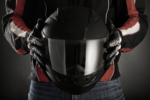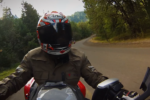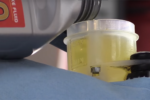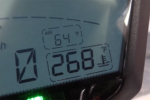How to Buy a Used Motorcycle
Ten Tips On How To Not Get Cheated
There are a lot of benefits that come from buying a used bike. But there are a lot of pitfalls and opportunities for things to go wrong. So, the first step we need to take if we want to win at buying a used bike is to figure out which one we want, narrow it down to two or three bikes and then become an expert on each of these models. I typically start researching the bikes I’m interested in as much as two months ahead of time. This is going to be critical for knowing when you’ve found a good deal.
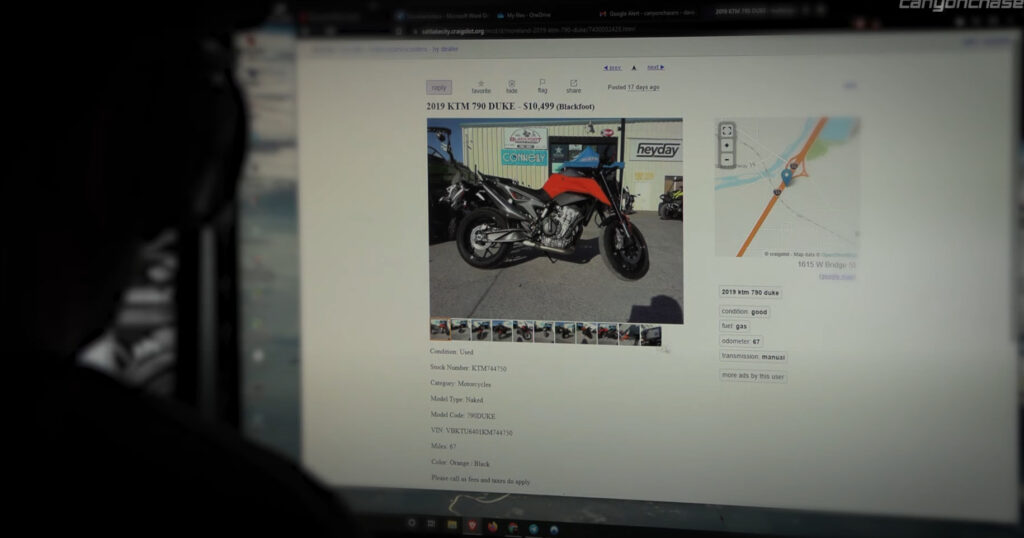
I’ll tell you the truth. I don’t like buying used bikes. They tend to come with surprises, and I’m more interested in riding than fixing the previous owners’ “upgrades”. So, my advice to you is when buying used look for every excuse not to buy the bike. That’s right. Go in assuming the worst. Would you trust any random dude on the street to perform complex service on your current bike? No? Neither would I. Buying a used bike; that’s exactly we are walking into. So, when shopping, I want a bike that is as close to completely untouched, bone-stock, as I can find. I don’t want one with loads of upgrades, not even an exhaust system.
What to Assume
Unless we have credible documentation saying otherwise, we need to assume that that no services have been done. The valves haven’t been adjusted and it needs an oil change.
The long-standing, rule-of-thumb is to change the coolant, every two years. Change the fork oil, every two years, change the brake fluid every two years, regardless of miles
Odds are, you’ll be buying a bike that’s more than two years old, so assume you will need to do all the basic services. Also assume you will probably need to replace the tires, the battery and the brake pads. Factor in your time or the expense of getting all those things taken care of. We want to protect ourselves from getting taken advantage of or ending up with a bike that’s nothing but problems.
What to Ask the Seller
A lot of times, buying a used bike from a dealership can reduce some of the risks, but that comes at a cost. Meaning a used bike from a dealership is going to be priced a bit higher because it’s probably been looked over by the shop mechanic, the transfer of ownership will be a lot easier, and if something catastrophic happens to the motor a week after you buy the bike, there is a business where we can find some resolution.
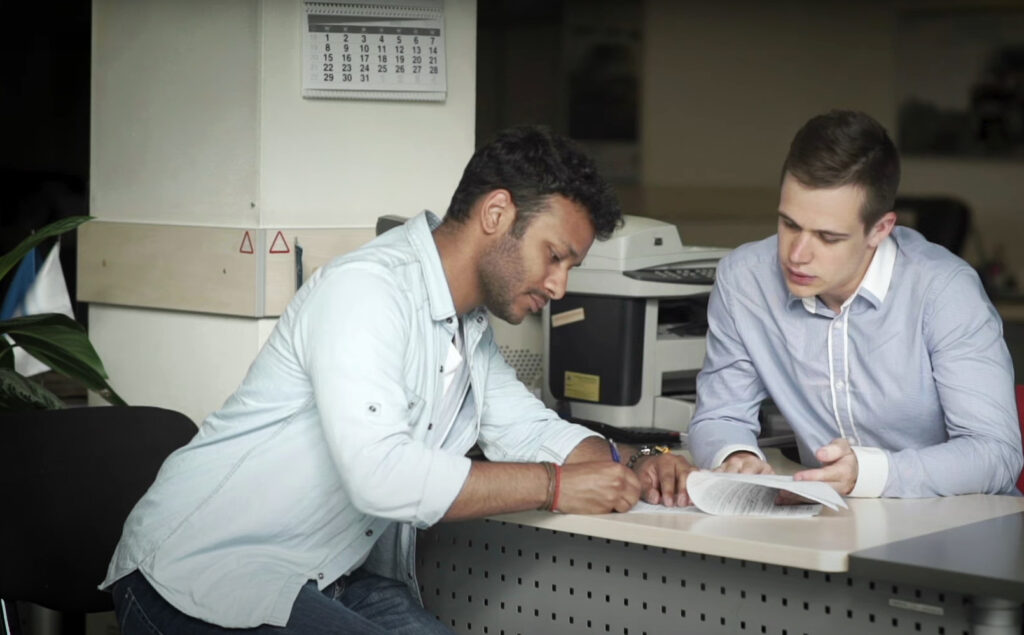
Buying a bike from a random seller will likely have the greatest cost benefit, but we are completely on our own to assess the condition of the bike, but we’ve got to assess the quality of the seller as well. I pay as much attention to them as I do the bike. Are they honest? Do their stories line up? Is something just off? No matter how badly I may want the bike. If something about the person makes my Spidey senses tingle, I run. Run away.
Now, this varies widely based on your local laws and regulations, so this is very broad. But the first question we need to ask is if the bike has a clear title, in hand, registered to them. If the bike has a salvage or “branded” title, or if there is a lien – is there a loan on the bike and the bank has the title, or if the title is in someone else’s name. Basically, we are looking for a legal documentation that proves they are entitled to sell the vehicle.
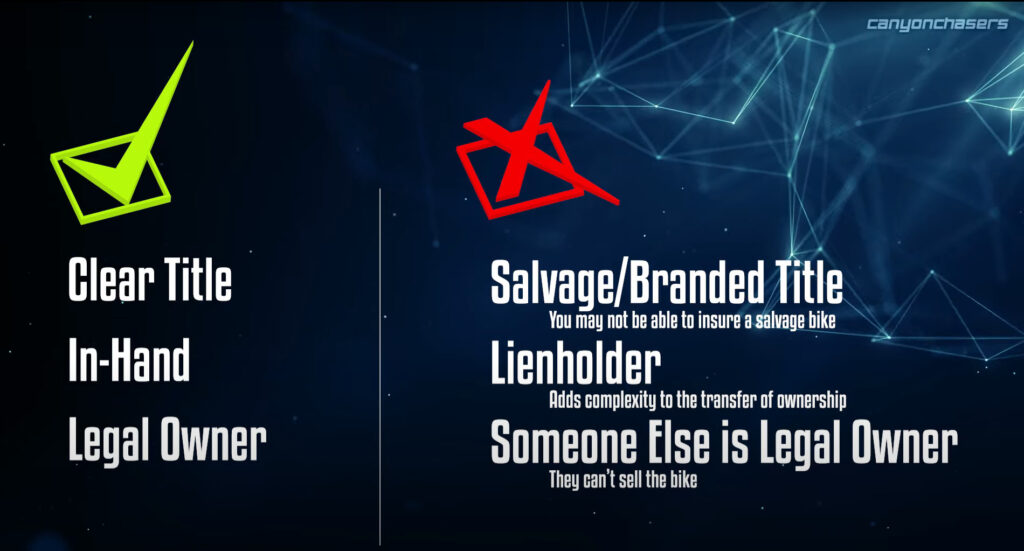
We want the seller to send us a photo of the front and the back of the title or proof of ownership so we can use any number of online Free VIN Check services where the vehicle is registered to make sure everything checks out. We also need to make sure the legal owner is the person we’re meeting. If this can’t be verified, then just walk away. It sounds simple, but this kills a lot of deals before they even get started.
Finally, we want to ask if the bike has been crashed, why they’re selling it and then ask if all the services have been done. Their answers help us figure out the honesty of the seller and assess the overall condition of the bike.
What To Do on Site
Unless we know exactly what we are looking for, the ideal situation is to have the seller bring the bike to a mechanic that we trust so they can look over the bike. An hour of labor can save so many headaches. But realistically, this almost never happens. You’ll probably end up driving to the sellers house.
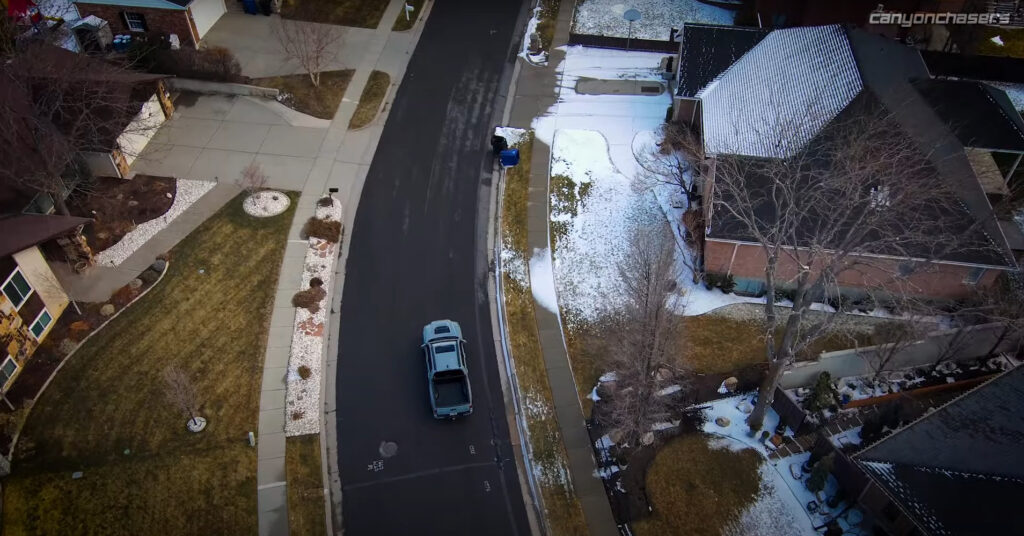
When we get the sellers address, or whatever location where you’re going to see the bike, do some research. Google earth or Zillow. Make sure the neighborhood looks reasonably safe. Trust those instincts, if anything doesn’t feel right, skip out on the deal, find another location or drive away. I’m typically going in with cash, so I always park so I can easily leave. Leave the cash in the car and lock the doors. If things start feeling weird half-way through, we can make an excuse to return to our car and then just drive away.
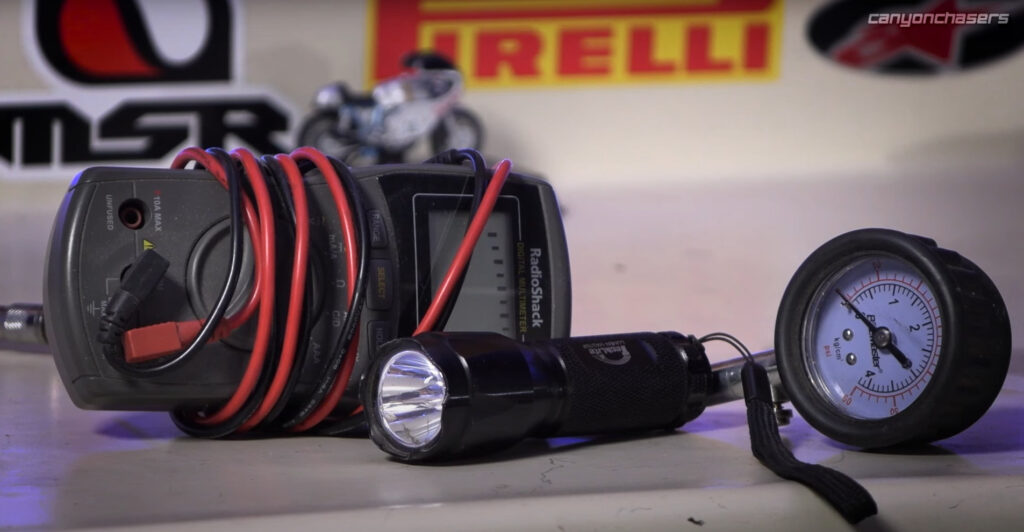
I’ll bring a small flashlight, a pen tire pressure gauge and a basic volt meter. The first thing we do is cross reference the VIN from the title, with the VIN on the frame with the VIN on the motor. If one of these doesn’t match. Walk. That’s a sign it’s either stolen or salvage.
Look, we are looking at the bike to figure out its history. Again, we are looking for any excuse not to buy it. I like to start with a wide view assessment. What is the overall condition? Is the black plastic turning blue? What do the handgrips look like? New or worn and nasty? What color is the oil, coolant and brake fluid, Is the bike clean? Is the paint swirled. Are their cracks in the bodywork? Dents in the tank? Is it knockoff eBay or original bodywork? If it’s eBay bodywork, that’s a significant hit to the actual value of the bike. Look for indications of the bike being repainted. Nobody paints a perfectly good bike and a respray will never be as good as factory paint. Repaints show some kind of crash damage.
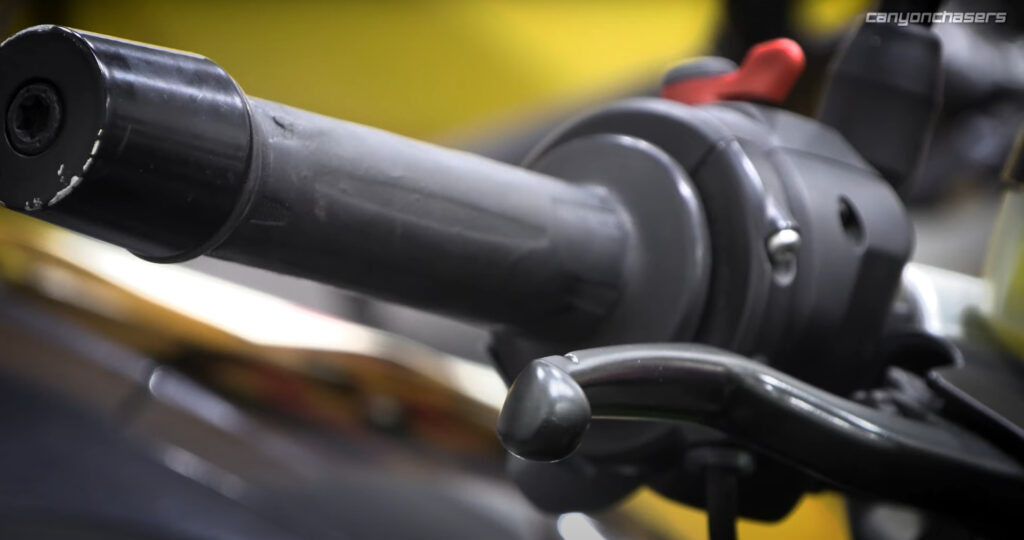
Next I’ll check for tip over damage. Almost every bike has been dropped. Look for the scratches in the bar ends and the ends of the levers. Are they aftermarket levers. Look for the scratches on the tips of the mirrors, the bottoms of the foot pegs, and the bottoms of the fork legs. Fork legs almost always hit the ground if the bike falls in motion. Then check the bottoms of the case covers, and the bottom of the exhaust pipe. Get on the ground and look at the bottom of the bike for leaks, cracks, grime or any other dents or damage.
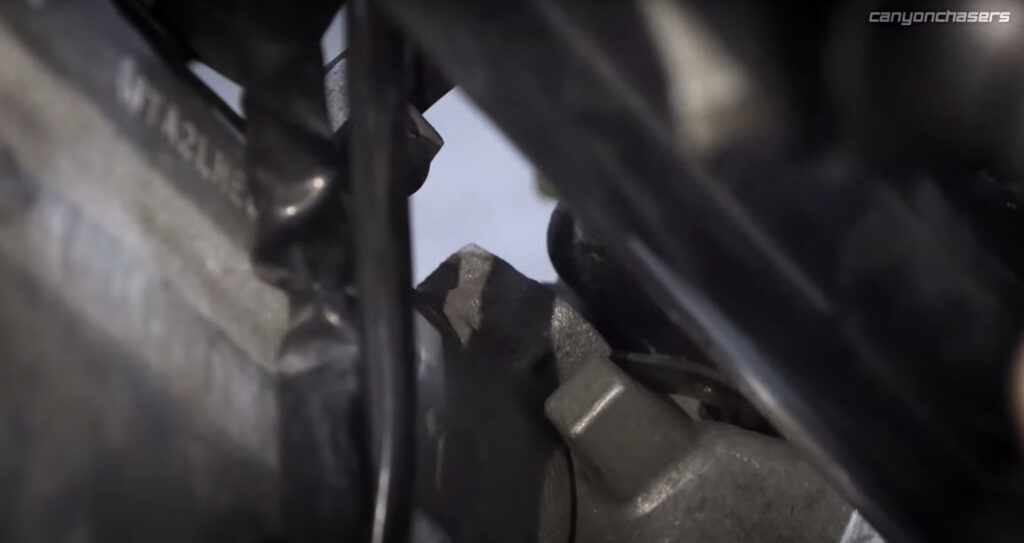
Always check the steering stops on the front of the frame. If these are at all bent or tweaked, then the bike has been crashed. Then walk around the back of the bike and look to see if the sub-frame is twisted or if anything looks out of line. If things are looking good, we can move forward and if not get out.
Start the bike and then go through every single switch and button. High-beam, low-beam. Turn signals, make sure all the brake light switches work, the horn. Do the brakes feel firm or squishy? Does the throttle turn easily and snap back? Turn the handlebars full lock left to right to see if the handlebars are bent or if the engine rev’s.
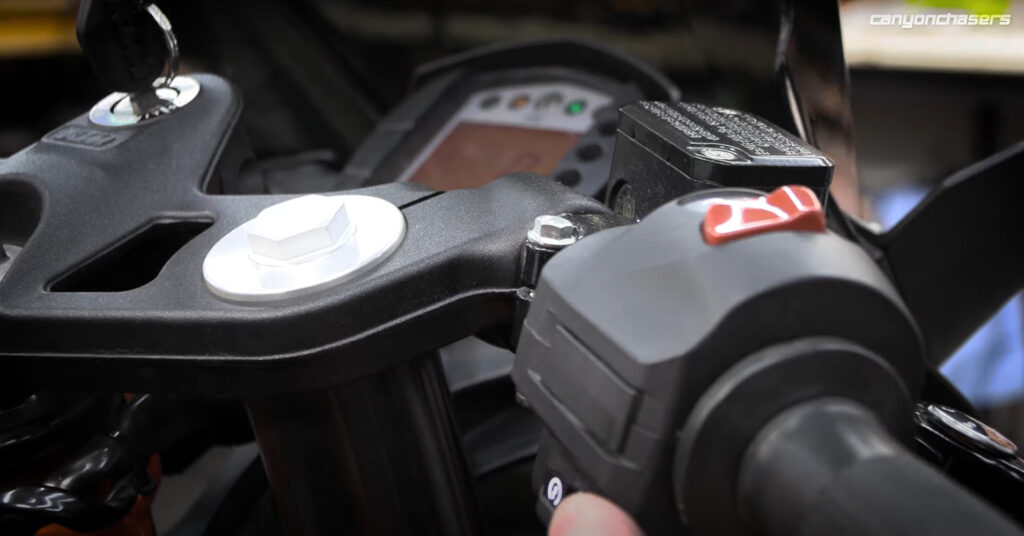
Then turn off the engine with the kill switch and start the bike again. Make sure the side stand kill switch works. Start the bike a third time. Three starts will typically tell you if the battery is weak.
Check if the seller has both keys, make sure the they both work the ignition, the gas cap, and look inside for anything funny then take off the seat. If the keys don’t open all the locks, something funky is going on.
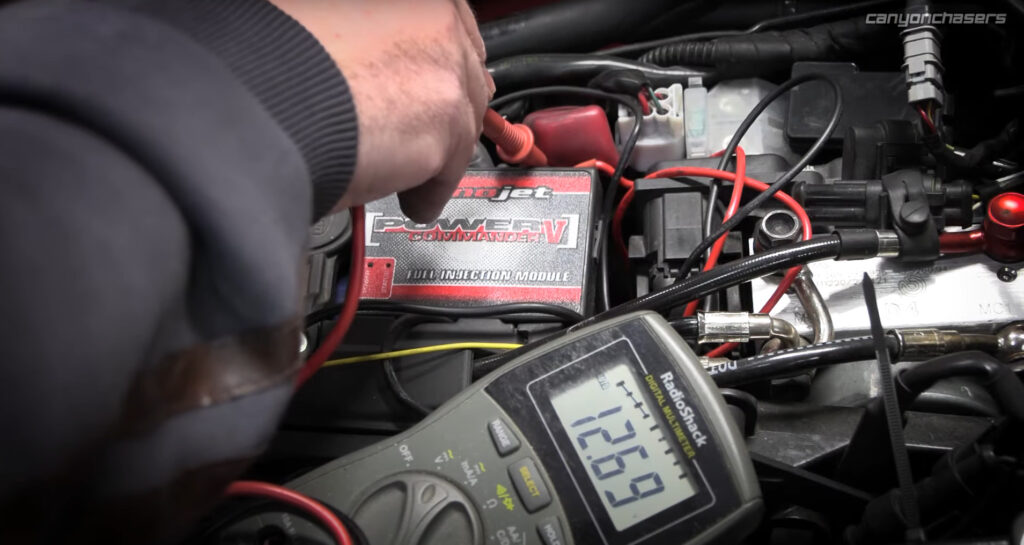
Put your volt-meter on the battery. The battery should be around 14 volts, but we really don’t care what the battery voltage is. This is an excuse to look at the wiring under the seat, and to see if anything has been attached to the battery or if things have been altered or spliced in such as an alarm, lights, speakers or any other nonsense. With as complex as modern motorcycles are, any alterations to the factory wiring loom are a huge red flag.
If we’ve made it this far, then we want to systematically work our way around the bike starting with the front tire. Now, I always plan on replacing the tires, but tires tell us a lot. Are they matched? How old are they? Does the front tire have uneven wear. Check the tire pressure. If the pressure is really low, it’s likely that the rest of the bike has probably also been neglected.
Use your little flashlight to look at the brake pads. I expect I’ll need to replace them, but how thin are they and how filthy is it down in there? look closely at the rotors and wheels feeling for ridges, cracks, gouges, obvious bends or any discolorations. Run your hands around the perimeter of both wheels looking for any chunks missing, or obvious woogies. Wiggle the valve stems. Do they leak when you touch them?
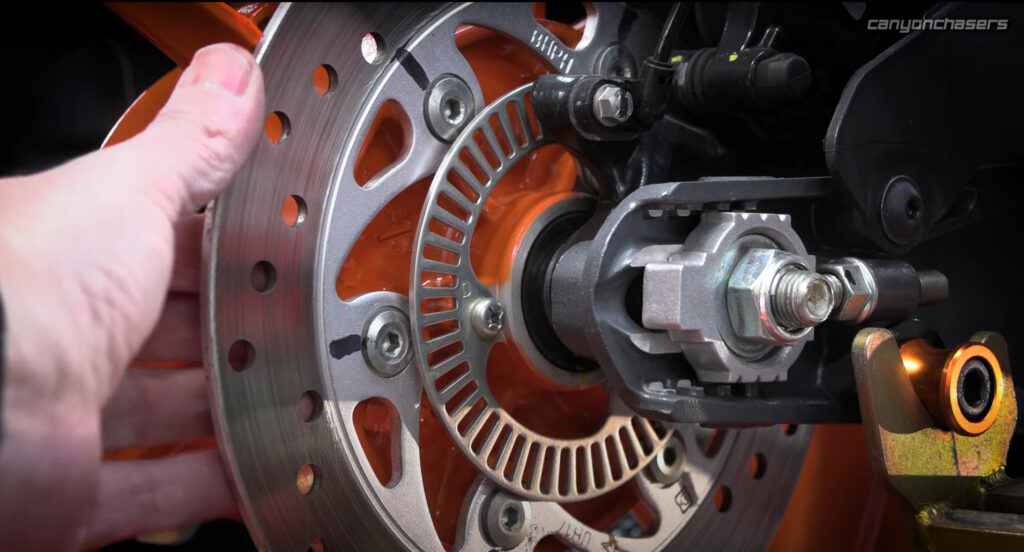
Check the fork seals for anything greasy, or slimy on the fork tubes. A blown fork seal is fairly common, and I always plan on servicing the forks, but we want to really look at the fork tubes for any pitting or damage. Damage here is extremely costly to repair and if left alone the damaged tube will just forever cut your fork seals. Those forks hanging on the wall had to be replaced because of damage to the chrome fork tube. No, it wasn’t cheap.
Use your flashlight to look at the header pipes for dents and black soot where they connect to the motor. Long term exhaust leaks can eventually result in damage to the valves. Shine the light in all the nooks and crannies looking for any fuel, oil or coolant leaks, or evidence of past leaks. We also want to look inside the heads of bolts looking for rust or corrosion. This helps us know if the bike has lived outside.
Run your hands over everything as this will likely reveal any hidden leaks. And finally check the chain and sprockets. Is it rusty, or greasy from lots of lube. Are the teeth hooked or pointy? Was this bike cared for and loved? Or was it neglected.
Test Rides
I don’t ask for test rides, nor do offer them when I’m selling a bike. The liability goes way up. We don’t want to crash a bike that we may not actually want. But if we feel like we need a test ride, write out a brief contract for a 20-minute buy-back-guarantee. Give the seller your cash, and they promise to give it back within 20-minutes if the bike comes back in the same condition it left. personally, I won’t bother. If I’m not comfortable with the bikes overall condition at this point, I’ll simply walk away. A test ride rarely tells me much more at this point.
To Buy or Not to Buy
If we feel good about it, then we negotiate a price and if everyone agrees, then comes the paperwork. Each state and country has its own rules about this. Do your research and find out what has to happen, before you meet the seller.
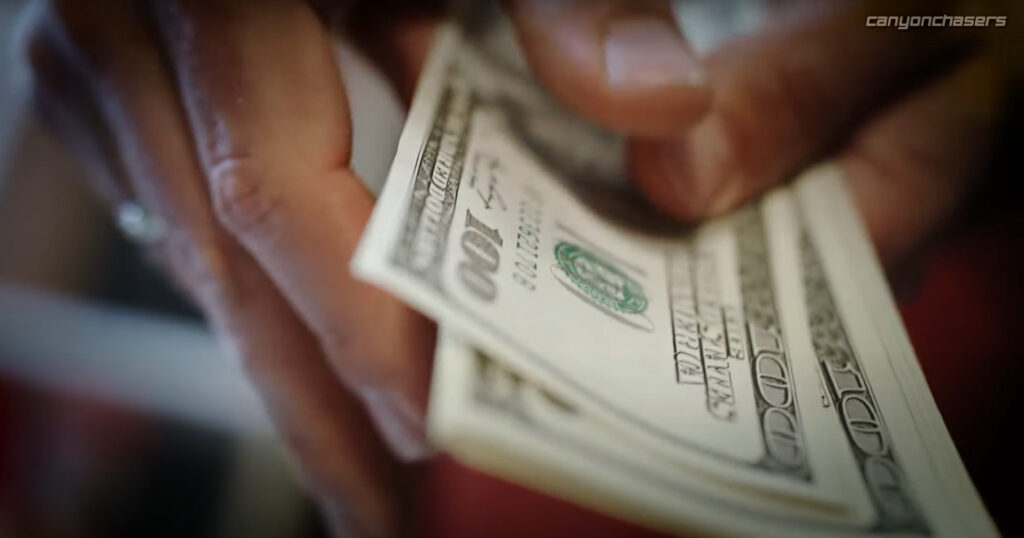
So, If I could leave you guys with one last bit of advice. Know when to walking away. When we add in all the things that likely will need to be replaced and serviced and then factor in that our time is also valuable. The best decision might be to walk away. That and… Okay two last bits of advice: The other secret to getting a good deal, besides doing your homework, and looking at all the right things on the bike, is to shop in the off season. In the middle of summer that bike might be worth $5,000, but in the dead of winter, it’s worth $3,500.

